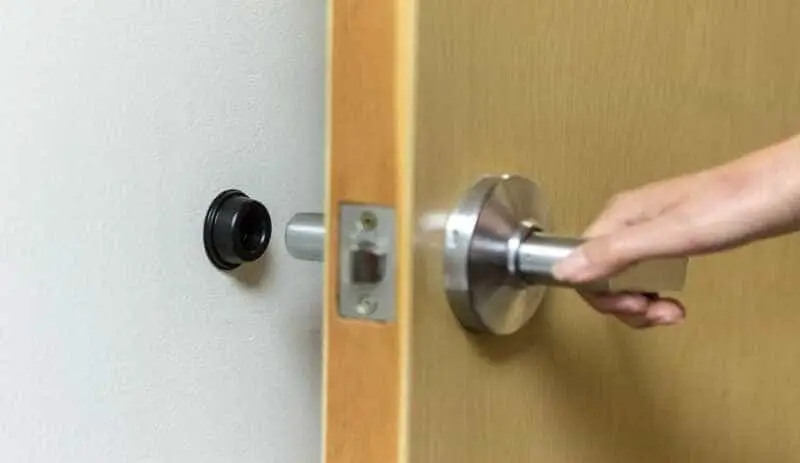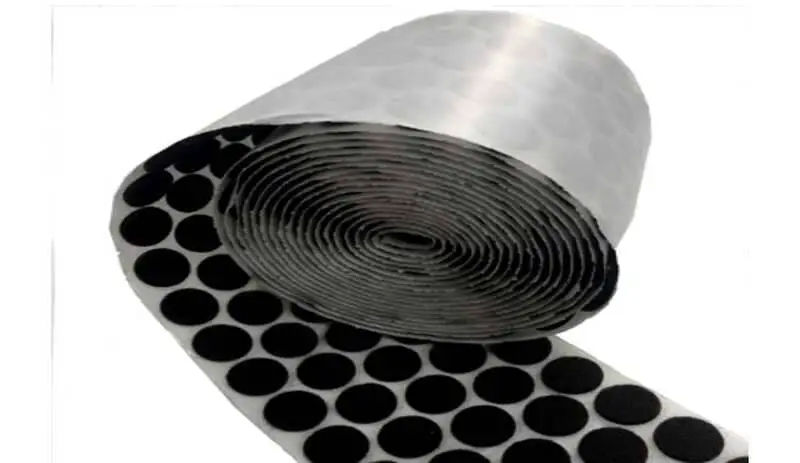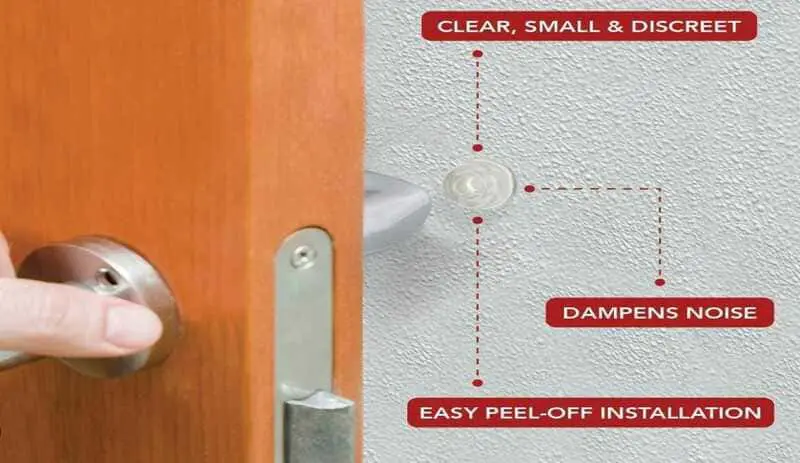Doorstops are an essential accessory to prevent damage to walls and doors in a home or office. Felt door stops and rubber doorstops are two of the most popular options on the market today. Each offers different advantages and disadvantages, and it is important to understand the differences between them before making a decision.
In this article, we will discuss the features, advantages, disadvantages, costs and recommended uses of felt bumpers vs. rubber bumpers. We will also examine the effectiveness of each type of buffer in reducing noise and vibration, as well as their environmental impact.

In the end, we hope to help readers make an informed decision suitable for their needs.
What are felt bumpers and rubber bumpers?
In order to establish a relationship between felt door stops vs. rubber door stops, it is necessary to define what exactly each of these accessories are.
Door stops are accessories that are placed on walls to prevent doors from hitting and damaging the wall. There are two main types of doorstops: felt doorstops and rubber doorstops.
Felt doorstops are made of a layer of soft, resilient felt, which is adhered to the wall using a strong adhesive. They are ideal for protecting walls and doors from scratches and scuffs, as their smooth surface prevents any damage.

Rubber bumpers, on the other hand, are made of soft, durable rubber or silicone. They are effective in dampening shocks and vibrations and are commonly used on heavy doors or in places where noise is a problem.

Differences between felt bumpers and rubber bumpers.
The main differences between felt bumpers vs. rubber bumpers are in their material, texture, appearance and purpose. Felt bumpers are made of a soft, resilient material, which is adhered to the wall using a strong adhesive. This felt layer is ideal for protecting walls and doors from scratches and scuffs, as its smooth surface prevents any damage.
Rubber bumpers, on the other hand, are made of a soft, durable rubber or silicone. They are effective in dampening shocks and vibrations, and are commonly used on heavy doors or in places where noise is a problem.
In terms of texture, felt bumpers have a smooth texture that is pleasant to the touch, while rubber bumpers are more slippery and soft.
In terms of appearance, felt bumpers have a more discreet and elegant look, while rubber bumpers can be more visible and less subtle.
In terms of purpose, felt bumpers are ideal for protecting the wall and door from damage, while rubber bumpers are more effective at reducing noise and vibration.
Advantages and disadvantages of felt door stops.
Felt door stops are a popular choice for protecting walls and furniture from marks and dings caused by doors. Here are some advantages and disadvantages of felt door stops:
Advantages:
– Soft protection: Felt bumpers are soft to the touch and have a smooth surface, making them ideal for protecting paint, wallpaper and other wall and furniture materials from scratches and marks caused by doors.
– Durability: Felt bumpers are tough and durable, and can withstand frequent use without wearing out or disintegrating over time.
– Easy installation: Felt door stops are easy to install and require no special tools. They can be glued with double-sided adhesive or simply snapped into place.

– Variety of options: Felt bumpers are available in a variety of shapes, sizes and colors to suit any decorating style.
Disadvantages:
– Less protection: While felt bumpers are effective at protecting against minor scratches and marks, they are not ideal for protecting against harder knocks.
– Slippage: Because of their smooth surface, felt bumpers can slip and move when the door is closed. This can be a problem if stops are needed to stay in place.
– Maintenance: Felt stops can collect dust and dirt over time, which can affect their appearance and effectiveness.
In general, felt stops are a good choice for protecting walls and furniture from marks and scratches caused by doors. However, if stronger impact protection is needed, other materials may be necessary.
Advantages and disadvantages of rubber door stops.
Rubber door stops are another popular option for protecting walls and furniture from marks and dings caused by doors. Here are some advantages and disadvantages of rubber door stops:
Advantages:
– Stronger protection: Rubber door stops are sturdier and can withstand stronger impacts than felt door stops, making them ideal for high-traffic areas or heavy doors.
– Non-slip: Rubber bumpers have a non-slip surface, making them ideal for areas where a strong, stable hold is needed.
– Durability: Rubber bumpers are durable and sturdy, and can withstand frequent use without wearing out or disintegrating over time.
– Easy installation: Rubber bumpers are easy to install and require no special tools. They can be glued with double-sided adhesive or simply snapped into place.
Disadvantages:
– Harder protection: Unlike felt bumpers, rubber bumpers can be too hard to protect sensitive materials such as paint and wallpaper, and can even cause marks.
– Less variety of options: Rubber bumpers have a limited variety of shapes and colors compared to felt bumpers.
– They can leave marks: Although durable, rubber bumpers can leave marks on the door or floor after prolonged use.
In general, rubber bumpers are a good choice for protecting walls and furniture from harder knocks and for high-traffic areas. However, if stops that are softer and protect sensitive materials are needed, other options may be considered.
How to choose between felt stops and rubber stops?
The choice between felt stops vs. rubber door stops will depend largely on individual protection needs and location of use. Here are some factors to consider when choosing between felt door stops and rubber door stops:
– Door type: heavier or higher traffic doors may require rubber door stops, as they are stronger and more durable. Lighter or less trafficked doors can be adequately protected by felt stops.
– Type of wall or furniture: If the door opens into a sensitive wall or piece of furniture, such as wallpaper or a painting, you may want to consider felt stops, as they are softer and less likely to cause marks.
– Location of Use: If the bumpers will be used in a wet or outdoor area, rubber bumpers may be more weather resistant and suitable for those conditions.
– Appearance: If appearance is an important consideration, felt bumpers may be a better choice, as they come in a variety of shapes and colors to suit home décor.
– Budget: Rubber bumpers are generally more expensive than felt bumpers, so budget may be a factor to consider.
In general, it is important to evaluate protection needs and usage conditions before choosing between felt door stops and rubber door stops. Both types of stops have their advantages and disadvantages, so it is important to consider all factors before making a decision.
Conclusion.
In conclusion, the choice between felt door stops and rubber door stops will depend on a variety of factors, including the type of door, location of use, type of wall or nearby furniture, appearance and budget. Felt door stops are ideal for lighter doors and in interior areas, as they are softer and less likely to cause marks on the wall.
While rubber bumpers are ideal for heavier doors or in exterior areas, as they are stronger and more durable. Both types of stops have their advantages and disadvantages, so it is important to carefully evaluate individual needs before making a decision.
Ultimately, choosing the right type of doorstop can help protect nearby walls and furniture, and reduce wear and tear on the door, providing an effective and durable solution for home protection.
